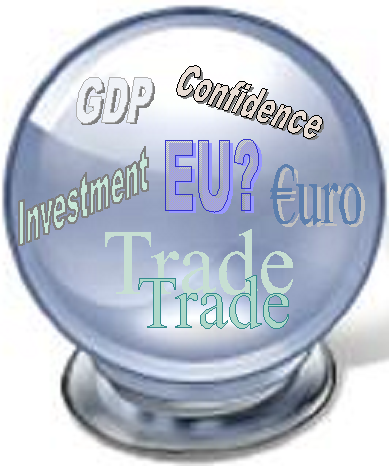 Is too much expected of economists? When economic forecasts turn out to be wrong, as they often are, economists are criticised for having inaccurate or unrealistic models. But is this a fair criticism?
Is too much expected of economists? When economic forecasts turn out to be wrong, as they often are, economists are criticised for having inaccurate or unrealistic models. But is this a fair criticism?
The following article by Richard Whittle from Manchester Metropolitan University looks at what economists can and cannot do. The article highlights two key problems for economic forecasting.
The first concerns human behaviour, which is influenced by a whole range of factors and can change very rapidly in response to changing circumstances. Moods of optimism or pessimism can quickly spread in response to a news item, such as measures announced by Donald Trump or latest data on growth or the housing market.
The second concerns the whole range of possible economic shocks. Such shocks, by their very nature, are hard to predict and can quickly make forecasts wrong. They could be a surprise election result, a surprise government policy change, a natural disaster, a war or a series of terrorist attacks. And these shocks, in turn, affect human behaviour. Consumption and investment may rise or fall as the events affect confidence and herd behaviour.
But is it a fair criticism of economics that it cannot foretell the future? Do economists, as the article says, throw up their hands and curse economics as a futile endeavour? Not surprisingly, the answer given is no! The author gives an analogy with medicine.
A doctor cannot definitely prevent illness, but can offer advice on prevention and hopefully offer a cure if you do get ill. This is the same for the work economists do.
Economists can offer advice on preventing crises or slowdowns but cannot definitively prevent them from happening. Economists can also offer robust advice on restoring growth, although when the advice is that the economy has grown too fast and should slow, it is often not welcomed by policy makers.
Helping understanding the various drivers in an economy and how humans are likely to respond to various incentives is a key part of what economists do. But making predictions with 100% certainty is asking too much of economists.
 And just as medical professionals can predict that if you smoke, eat unhealthy food or take no exercise you are likely to be less healthy and die younger, but cannot say precisely when an individual will die, so too economists can predict that certain policy measures are likely to increase or decrease GDP or employment or inflation, but they cannot say precisely how much they will be affected.
And just as medical professionals can predict that if you smoke, eat unhealthy food or take no exercise you are likely to be less healthy and die younger, but cannot say precisely when an individual will die, so too economists can predict that certain policy measures are likely to increase or decrease GDP or employment or inflation, but they cannot say precisely how much they will be affected.
As the article says, “the true value of the economist lies not in mystical fortune telling, but in achieving a better understanding of the nature of the economies in which we live and work.”
Article
How to be an economist in 2017 The Conversation, Richard Whittle (24/1/17)
Questions
- For what reasons has economics been ‘in crisis’? What is the solution to this crisis?
- Look at some macroeconomic forecasts for a country of your choice made two years ago for today (see, for example, forecasts made by the IMF, OECD or a central bank). How accurate were they? Explain any inaccuracies.
- To what extent is economic forecasting like weather forecasting?
- What is meant by cumulative causation? Give some examples. Why does cumulative causation make economic forecasting difficult?
- How is the increased usage of contactless card payments likely to affect spending patterns? Explain why.
- Why is it difficult to forecast the effects of Brexit?
- How can economic advisors help governments in designing policy?
- Why do people tend to overweight high probabilities and underweight low ones?
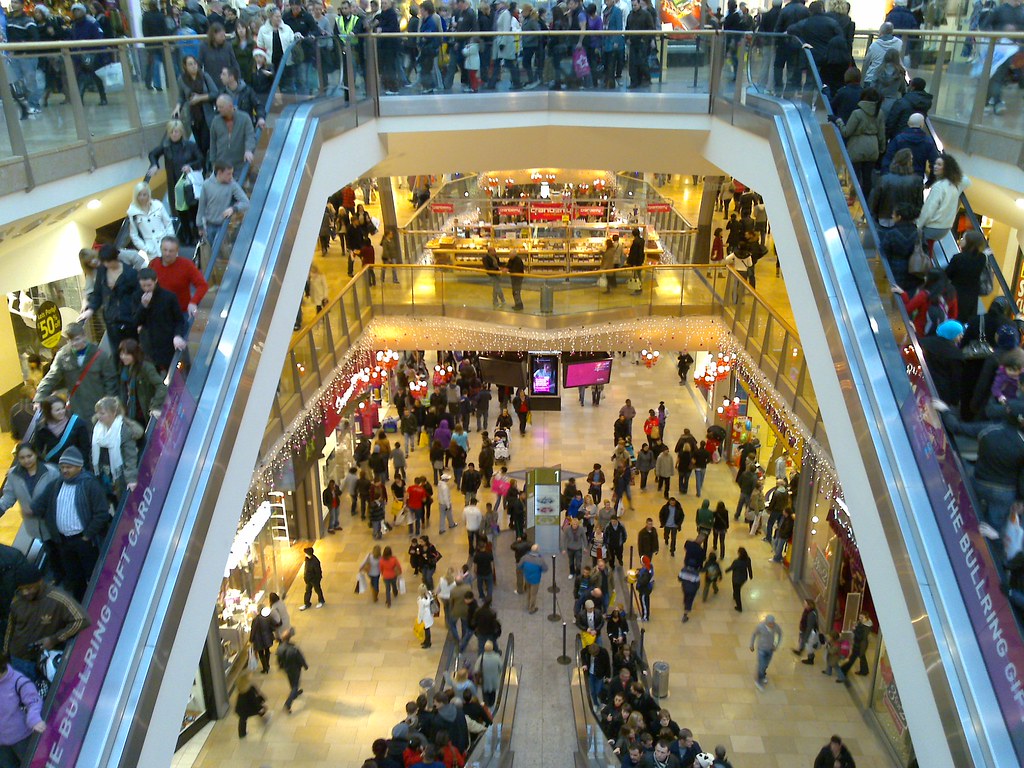 We all know that our spending changes during the Christmas period: namely we spend a lot more than during the rest of the year. This applies across the board – we buy more clothes, food and drink, even though each day, we can generally only wear, eat and drink the same amount as usual! This has some interesting points from a behavioural economics stance, but here I’m going to think about the impact of this on some key retailers.
We all know that our spending changes during the Christmas period: namely we spend a lot more than during the rest of the year. This applies across the board – we buy more clothes, food and drink, even though each day, we can generally only wear, eat and drink the same amount as usual! This has some interesting points from a behavioural economics stance, but here I’m going to think about the impact of this on some key retailers.
Marks & Spencer have previously made headlines for the wrong reasons: poor sales on clothes and the need for serious restructuring of its stores, target audience and marketing in order for this long-standing retailer to remain current and competitive. Although sales were expected to rise in the Christmas period, they did significantly better than expected, with sales growth of 2.3%, above the expected 0.5%. More encouragingly, this growth was not just in food, but in clothing and homeware as well.
One of the key reasons given for this above-expected improvement in sales was the conveniently timed Christmas, falling on a Sunday and hence giving extra shopping days. M&S have said that this certainly helped with their Christmas trading. Although this was good for Q4 trading, the timing will not play ball for Easter and they are expecting a negative effective during that trading period. Some analysts have said that despite the growth being boosted by the timing of Christmas, there were still signs of a change in fortunes. Bryan Roberts from TCC Global said:

“It might be the sign of some green shoots in that part of the business.”
This is consistent with the Chief Executive, Steve Rowe’s comments that despite the timing of Christmas adding around 1.5% to clothing and home sales growth, the recovery was also due to “better ranges, better availability and better prices”.
It appears as though many other retailers have experienced positive growth in Christmas sales, with the John Lewis Partnership seeing like-for-like sales growth of 2.7%, with Waitrose at a 2.8% rise.
The other interesting area is supermarkets. Waitrose and M&S are certainly competitors in the food industry, but at the higher end. If we consider the mid-range supermarkets (Asda, Morrisons, Sainsbury’s and Tesco), they have also performed, as a whole, fairly well. The low-cost Aldi and Lidl have been causing havoc for these supermarket chains, but the Christmas period seemed to prove fruitful for them.
Tesco saw UK like-for-like sales up by 1.8%, which showed significant progress in light of previously difficult trading periods with the emergence of the low-cost chains. Q$ was its better quarter of sales growth for over five years. One of the key drivers of this growth is fresh food sales and its Chief Executive, Dave Lewis said “we are very encouraged by the sustained strong progress that we are making across the group.” However, despite these positive numbers, Tesco only really met market expectation, rather than surpassing them as Morrison, Sainsbury’s and Marks & Spencer did.
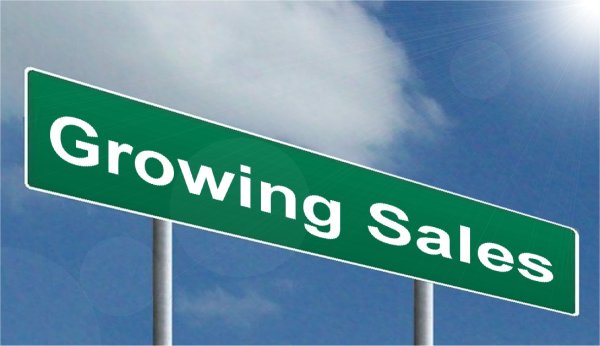 Perhaps the stand-out performance came from Morrisons, with its best Christmas performance for seven years. Another casualty of the low-cost competitors, it has been making a recovery and Q4 of 2016 demonstrated this beyond doubt. Like-for-like sales for the nine weeks to the start of 2017 were up by 2.9%, with growth in both food and drink and clothing.
Perhaps the stand-out performance came from Morrisons, with its best Christmas performance for seven years. Another casualty of the low-cost competitors, it has been making a recovery and Q4 of 2016 demonstrated this beyond doubt. Like-for-like sales for the nine weeks to the start of 2017 were up by 2.9%, with growth in both food and drink and clothing.
Morrisons has been on a long and painful journey, with significant reorganisation of its stores and management. While this has created problems, it does appear to be working.
We also saw a general move up to the more premium own-brands and this again benefited all supermarkets. Morrisons Chief Executive, David Potts said:
“We are delighted to have found our mojo … Every year does bring its challenges, but so far we haven’t seen any change in consumer sentiment. Customers splashed out over Christmas and wanted to trade up … We are becoming more relevant to more people as we turn the company around.”
So it seems to be success all round for traders over the Christmas period and that, in many cases, this has been a reversal of fortunes. The question now is whether or not this will continue with the uncertainty over Brexit and the economy.
Articles
M&S beats Christmas sales forecast in clothing and homeware BBC News (12/1/17)
Marks & Spencer reports long-awaited rise in clothing sales The Telegraph, Ashley Armstrong (12/1/17)
Marks and Spencer reveals signs of growth in clothing business Financial Times, Mark Vandevelde (12/1/17)
Tesco’s festive sales lifted by fresh food The Telegraph, Ashley Armstrong (12/01/17)
Tesco caps year of recovery with solid Christmas Reuters, James Davey and Kate Holton (12/1/17)
Tesco, Marks & Spencer, Debenhams, John Lewis and co cheer strong Christmas trading Independent, Josie Cox and Zlata Rodionova (12/1/17)
Morrisons sees best Christmas performance for seven years BBC News (10/12/17)
Morrisons enjoys some ‘remarkable’ Christmas cheer’ The Guardian, Sarah butler and Angela Monaghan (10/1/17)
Record Christmas as Sainsbury’s ‘shows logic of Argos takeover’ The Guardian, Sarah Butler and Angela Monaghan (11/1/17)
Questions
- Why have the big four in the supermarket industry been under pressure over the past 2 years in terms of their sales, profits and market share?
- How have the changes that have been made by M&S’ Chief Executive helped to boost sales once more?
- Share prices for supermarkets have risen. Illustrate why this is on a demand and supply diagram. Why has Tesco, despite its performance, seen a fall in its share price?
- What are the key factors behind Morrison’s success?
- What type of market structure is the supermarket industry? Does this help to explain why the big four have faced so many challenges in recent times?
- If there has been a general increase in sales across all stores over the Christmas trading period, that goes beyond expectations, can we infer anything about customer tastes and their expectations about the future?
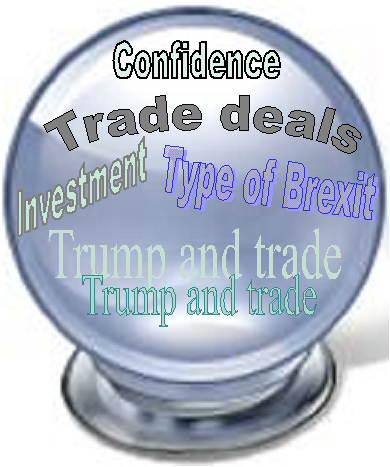 Economic forecasting came in for much criticism at the time of the financial crisis and credit crunch. Few economists had predicted the crisis and its consequences. Even Queen Elizabeth II, on a visit to the London School of Economics in November 2008, asked why economists had got it so wrong. Similar criticisms have emerged since the Brexit vote, with economic forecasters being accused of being excessively pessimistic about the outcome.
Economic forecasting came in for much criticism at the time of the financial crisis and credit crunch. Few economists had predicted the crisis and its consequences. Even Queen Elizabeth II, on a visit to the London School of Economics in November 2008, asked why economists had got it so wrong. Similar criticisms have emerged since the Brexit vote, with economic forecasters being accused of being excessively pessimistic about the outcome.
The accuracy of economic forecasts was one of the topics discussed by Andy Haldane, Chief Economist at the Bank of England. Speaking at the Institute for Government in London, he compared economic forecasting to weather forecasting (see section from 15’20” in the webcast):
“Remember that? Michael Fish getting up: ‘There’s no hurricane coming but it will be very windy in Spain.’ Very similar to the sort of reports central banks – naming no names – issued pre-crisis, ‘There is no hurricane coming but it might be very windy in the sub-prime sector.” (18’40”)
The problem with the standard economic models which were used for forecasting is that they were essentially equilibrium models which work reasonably well in ‘normal’ times. But when there is a large shock to the economic system, they work much less well. First, the shocks themselves are hard to predict. For example, the sub-prime crisis in 2007/8 was not foreseen by most economists.
Then there is the effect of the shocks. Large shocks are much harder to model as they can trigger strong reactions by consumers and firms, and governments too. These reactions are often hugely affected by sentiment. Bouts of pessimism or even panic can grip markets, as happened in late 2008 with the collapse of Lehman Brothers. Markets can tumble way beyond what would be expected by a calm adjustment to a shock.
It can work the other way too. Economists generally predicted that the Brexit vote would lead to a fall in GDP. However, despite a large depreciation of sterling, consumer sentiment held up better than was expected and the economy kept growing.
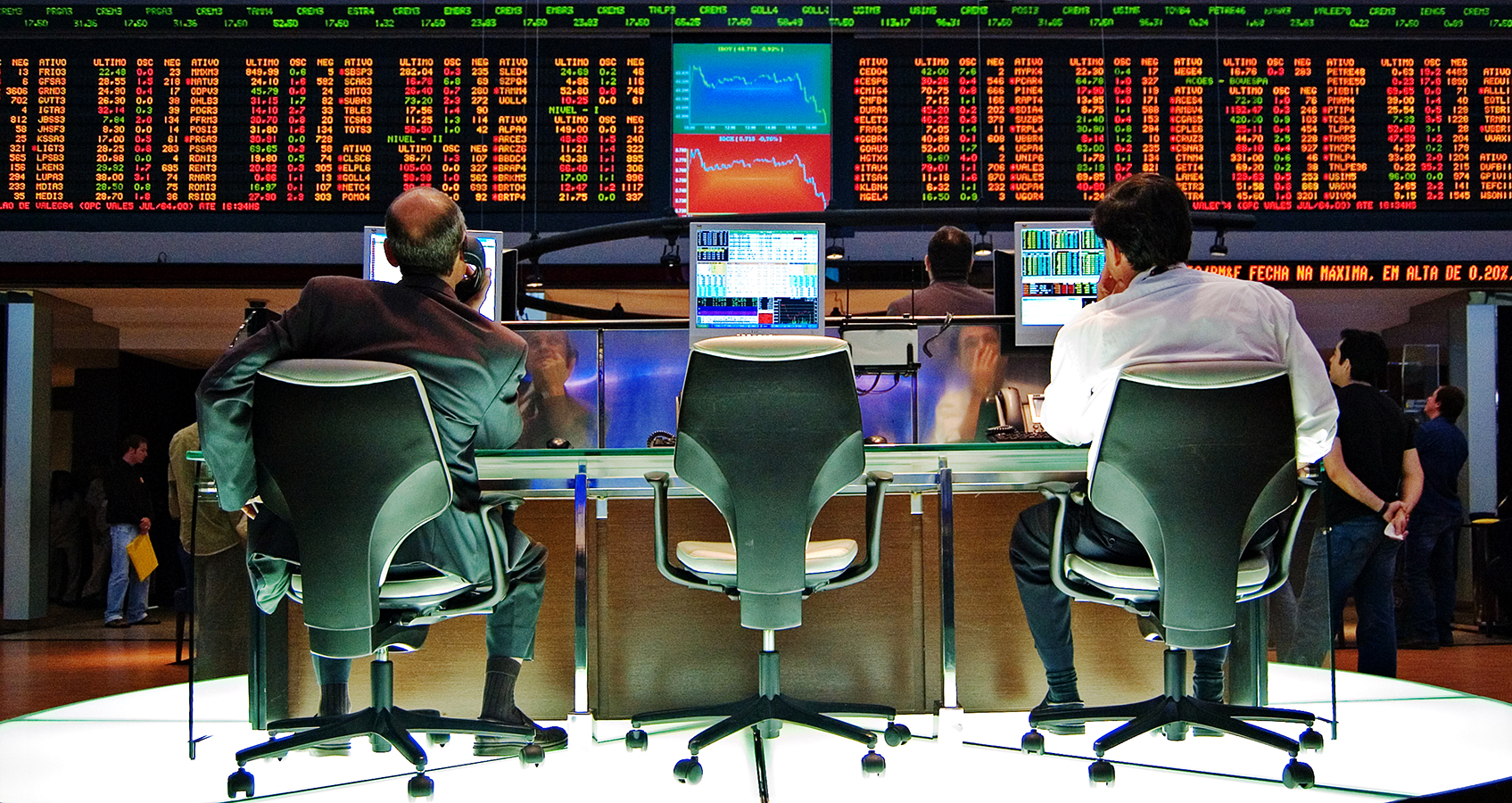 But is it fair to compare economic forecasting with weather forecasting? Weather forecasting is concerned with natural phenomena and only seeks to forecast with any accuracy a few days ahead. Economic forecasting, if used correctly, highlights the drivers of economic change, such as government policy or the Brexit vote, and their likely consequences, other things being equal. Given that economies are constantly being affected by economic shocks, including government or central bank actions, it is impossible to forecast the state of the macroeconomy with any accuracy.
But is it fair to compare economic forecasting with weather forecasting? Weather forecasting is concerned with natural phenomena and only seeks to forecast with any accuracy a few days ahead. Economic forecasting, if used correctly, highlights the drivers of economic change, such as government policy or the Brexit vote, and their likely consequences, other things being equal. Given that economies are constantly being affected by economic shocks, including government or central bank actions, it is impossible to forecast the state of the macroeconomy with any accuracy.
This does not mean that forecasting is useless, as it can highlight the likely effects of policies and take into account the latest surveys of, say, consumer and business confidence. It can also give the most likely central forecast of the economy and the likely probabilities of variance from this central forecast. This is why many forecasts use ‘fan charts’: see, for example, Bank of England forecasts.
What economic forecasts cannot do is to predict the precise state of the economy in the future. However, they can be refined to take into account more realistic modelling, including the modelling of human behaviour, and more accurate data, including survey data. But, however refined they become, they can only ever give likely values for various economic variables or likely effects of policy measures.
Webcast
 Andy Haldane in Conversation Institute for Government (5/1/17)
Andy Haldane in Conversation Institute for Government (5/1/17)
Articles
‘Michael Fish’ Comments From Andy Haldane Pounced Upon By Brexit Supporters Huffington Post, Chris York (6/1/17)
Crash was economists’ ‘Michael Fish’ moment, says Andy Haldane BBC News (6/1/17)
The Bank’s ‘Michael Fish’ moment BBC News, Kamal Ahmed (6/1/17)
Bank of England’s Haldane admits crisis in economic forecasting Financial Times, Chris Giles (6/1/17)
Chief economist of Bank of England admits errors in Brexit forecasting BBC News, Phillip Inman (5/1/17)
Economists have completely failed us. They’re no better than Mystic Meg The Guardian, Simon Jenkins (6/1/17)
Five things economists can do to regain trust The Guardian, Katie Allen and Phillip Inman (6/1/17)
Andy Haldane: Bank of England has not changed view on negative impact of Brexit Independent, Ben Chu (5/1/17)
Big data could help economists avoid any more embarrassing Michael Fish moments Independent, Hamish McRae (7/1/17)
Questions
- In what ways does economic forecasting differ from weather forecasting?
- How might economic forecasting be improved?
- To what extent were the warnings of the Bank of England made before the Brexit vote justified? Did such warnings take into account actions that the Bank of England was likely to take?
- How is the UK economy likely to perform over the coming months? What assumptions are you making here?
- Brexit hasn’t happened yet. Why is it extremely difficult to forecast today what the effects of actually leaving the EU will be on the UK economy once it has happened?
- If economic forecasting is difficult and often inaccurate, should it be abandoned?
- The Bank of England is forecasting that inflation will rise in the coming months. Discuss reasons why this forecast is likely to prove correct and reasons why it may prove incorrect.
- How could economic forecasters take the possibility of a Trump victory into account when making forecasts six months ago of the state of the global economy a year or two ahead?
- How might the use of big data transform economic forecasting?
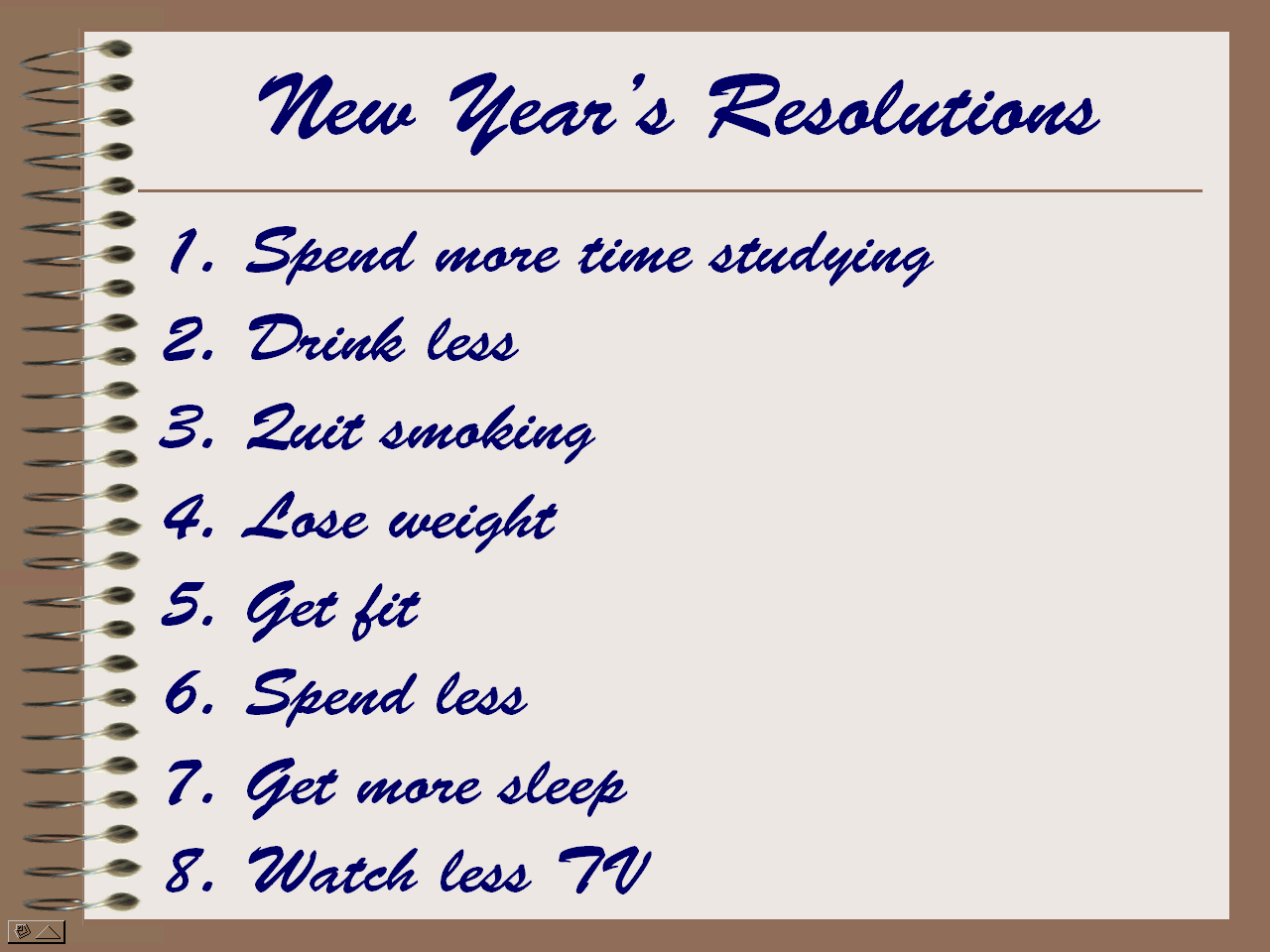 Many or us make New Year’s resolutions: going on a diet, doing exercise, spending more time studying. But few people stick to them, even though they say they would like to. So how can people be motivated to keep to their resolutions? Well, the experiments of behavioural economists provide a number of insights into the problem. They also suggest various incentives that can be used to motivate people to stick to their plans.
Many or us make New Year’s resolutions: going on a diet, doing exercise, spending more time studying. But few people stick to them, even though they say they would like to. So how can people be motivated to keep to their resolutions? Well, the experiments of behavioural economists provide a number of insights into the problem. They also suggest various incentives that can be used to motivate people to stick to their plans.
Central to the problem is that people have ‘time inconsistency’. They put a higher weight on the benefits of things that are good for them in the future and less weight on these benefits when they have to act now. You might strongly believe that going to the gym is good for you and plan to go next Monday. But when Monday comes, you can’t face it.
Another part of the time inconsistency problem is the relatively high weighting given to short-term gratification – eating chocolates, watching TV, spending time on social media, staying in bed.  When thinking about whether you would like to do these things in, say, a couple of days’ time, you put a low weight on the pleasures. But thinking about doing them right now, you put a much higher weight on them. As the well-known saying goes, ‘Hard work often pays off after time, but laziness pays off now’.
When thinking about whether you would like to do these things in, say, a couple of days’ time, you put a low weight on the pleasures. But thinking about doing them right now, you put a much higher weight on them. As the well-known saying goes, ‘Hard work often pays off after time, but laziness pays off now’.
So how can people be motivated to stick to their resolutions? Behavioural economists have studied various systems of incentives to see what works. Some of the findings are as follows:
|
|
| • |
People are generally loss averse. To get us to stick to New Year’s resolutions, we could devise a system of penalties for breaking them, such as paying 20p each time you swear! |
| • |
Given people’s time inconsistency, devising a system whereby you get treats after doing something you feel is good for you: e.g. watching TV for 30 minutes after you’ve done an hour’s revision. Rewards should follow effort, not precede them. |
| • |
Having simple clear goals. Thus rather than merely saying ‘I’ll eat less’, you devise a meal plan with menus that meet calorie and other dietary goals. Rather than saying, ‘I’ll exercise more’, you commit to going to the gym at specific times each week and doing a specific amount of each exercise. |
| • |
Ritualising. This is where you devise a regime that is feasible to stick to. For example, you could always write a shopping list to meet your dietary goals and then only buy what’s on that list; or you and your flatmates could have a rota for household chores. |
| • |
Social reinforcement. This is where people have a joint plan and help each other stick to it, such as going to the gym at specific times with a friend or group of friends, or joining a support group (e.g. to lose weight, or give up drinking or smoking). |
| • |
Avoiding temptation. For example, if you want to give up chocolate, don’t have any in the house. |
| • |
Using praise rather than criticism. People generally respond better to positive incentives than negative ones. |
Behavioural economists test these different incentive mechanisms to see what works best and then to see how they can be refined. The testing could be done experimentally, with volunteers being given different incentives and seeing how they respond. Alternatively, data could be collected on the effects of different incentive mechanisms that people have actually used, whether at home or at work.
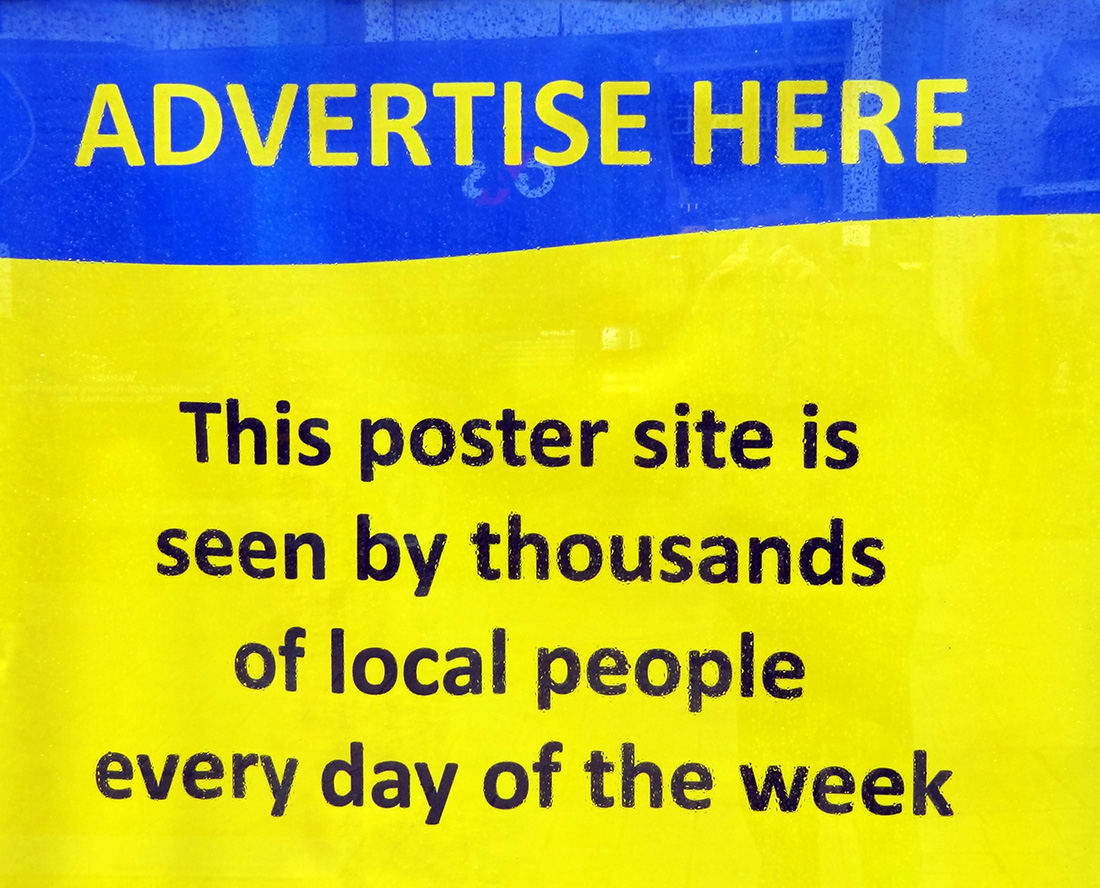 The advertising and marketing industry analyses consumer trends and how people respond to pricing, quality, display, packaging, advertising, etc. They want to understand human behaviour so that they can ‘direct’ it in their favour of their clients. Governments too are keen to find ways of encouraging people to do more of things that are good for them and less of things that are bad.
The advertising and marketing industry analyses consumer trends and how people respond to pricing, quality, display, packaging, advertising, etc. They want to understand human behaviour so that they can ‘direct’ it in their favour of their clients. Governments too are keen to find ways of encouraging people to do more of things that are good for them and less of things that are bad.
The UK government’s Behavioural Insights Team looks at ways people can be ‘nudged’ into changing their behaviour, see the blog A nudge in the right direction?
But back to New Year’s resolutions, have you made any? And, if so, have you thought about how you might stick to them? Have you thought about the incentives?
Podcast
 Dan Ariely talks “Payoff” WUNC 91.5: North Carolina Public Radio, Dan Ariely talks to Frank Stasio (3/1/17)
Dan Ariely talks “Payoff” WUNC 91.5: North Carolina Public Radio, Dan Ariely talks to Frank Stasio (3/1/17)
Articles and blogs
50 New Year’s Resolution Ideas and how to Achieve Each of Them Lifehack, Ivan Dimitrijevic (31/12/16)
5 New Year’s Resolutions You Can Keep (With The Help Of Behavioral Science Research) Forbes, Carmen Nobel (3/1/17)
The science behind keeping your New Year’s resolutions BT, SNAP PA (30/12/15)
The Guardian view on New Year resolutions: fitter, happier, more productive The Guardian, Editorial (3/1/17)
The Behavioral Economics of Your New Year’s Resolutions The Daily Beast, Uri Gneezy (5/1/14)
The psychology of New Year’s resolution The Conversation, Mark Griffiths (1/1/16)
Apply Behavioral Economics for a Better New Year Wharton Blog Network, William Hartje (16/1/14)
The Kardashians Can Help Your New Year’s Resolutions Huffington Post, John Beeby (29/12/16)
Using economics to score with New Year resolutions The Hindu, Venky Vembu (4/1/17)
Be It Resolved The New York Times, John Tierney (5/1/12)
Goal-setting site
stickK ‘Set your goals and achieve them!’
Questions
- Explain what is meant by time inconsistent behaviour. Is this the same as giving future costs and benefits a lower weighting than present ones (and hence having to discount future costs and benefits)?
- Give some examples of ways in which your own behaviour exhibits time inconsistency. Would it be accurate to describe this as ‘present bias’?
- Would you describe not sticking to New Year’s resolutions as ‘irrational behaviour’?
- Have you made any New Year’s resolutions, or do you have any plans to achieve goals? Could you alter your own personal incentives and, if so, how, to make it more likely that you will stick to your resolutions/goals?
- Give some examples of ways in which the government could ‘nudge’ us to behave in ways that were more in our own individual interests or those of society or the environment?
- Do you think it’s desirable that the advertising industry should employ psychologists and behavioural economists to help it achieve its goals?
 The articles below examine the rise of the sharing economy and how technology might allow it to develop. A sharing economy is where owners of property, equipment, vehicles, tools, etc. rent them out for periods of time, perhaps very short periods. The point about such a system is that the renter deals directly with the property owner – although sometimes initially through an agency. Airbnb and Uber are two examples.
The articles below examine the rise of the sharing economy and how technology might allow it to develop. A sharing economy is where owners of property, equipment, vehicles, tools, etc. rent them out for periods of time, perhaps very short periods. The point about such a system is that the renter deals directly with the property owner – although sometimes initially through an agency. Airbnb and Uber are two examples.
So far the sharing economy has not developed very far. But the development of smart technology will soon make a whole range of short-term renting contracts possible. It will allow the contracts to be enforced without the need for administrators, lawyers, accountants, bankers or the police. Payments will be made electronically and automatically, and penalties, too, could be applied automatically for not abiding by the contract.
 One development that will aid this process is a secure electronic way of keeping records and processing payments without the need for a central authority, such as a government, a bank or a company. It involves the use of ‘blockchains‘ (see also). The technology, used in Bitcoin, involves storing data widely across networks, which allows the data to be shared. The data are secure and access is via individuals having a ‘private key’ to parts of the database relevant to them. The database builds in blocks, where each block records a set of transactions. The blocks build over time and are linked to each other in a logical order (i.e. in ‘chains’) to allow tracking back to previous blocks.
One development that will aid this process is a secure electronic way of keeping records and processing payments without the need for a central authority, such as a government, a bank or a company. It involves the use of ‘blockchains‘ (see also). The technology, used in Bitcoin, involves storing data widely across networks, which allows the data to be shared. The data are secure and access is via individuals having a ‘private key’ to parts of the database relevant to them. The database builds in blocks, where each block records a set of transactions. The blocks build over time and are linked to each other in a logical order (i.e. in ‘chains’) to allow tracking back to previous blocks.
Blockchain technology could help the sharing economy to grow substantially. It could significantly cut down the cost of sharing information about possible rental opportunities and demands, and allow minimal-cost secure transactions between owner and renter. As the IBM developerWorks article states:
Rather than use Uber, Airbnb or eBay to connect with other people, blockchain services allow individuals to connect, share, and transact directly, ushering in the real sharing economy. Blockchain is the platform that enables real peer-to-peer transactions and a true ‘sharing economy’.
Article
New technology may soon resurrect the sharing economy in a very radical form The Guardian, Ben Tarnoff (17/10/16)
Blockchain and the sharing economy 2.0 IBM developerWorks, Lawrence Lundy (12/5/16)
2016 is set to become the most interesting year yet in the life story of the sharing economy Nesta, Helen Goulden (Dec 2015)
Blockchain Explained Business Insider, Tina Wadhwa and Dan Bobkoff (16/10/16)
A parliament without a parliamentarian Interfluidity, Steve Randy Waldman (19/6/16)
Blockchain and open innovation: What does the future hold Tech City News, Jamie QIU (17/10/16)
Banks will not adopt blockchain fast Financial Times, Oliver Bussmann (14/10/16)
Blockchain-based IoT project does drone deliveries using Ethereum International Business Times, Ian Allison (14/10/16)
Questions
- What do you understand by the ‘sharing economy’?
- Give some current examples of the sharing economy? What other goods or services might be suitable for sharing if the technology allowed?
- How could blockchain technology be used to cut out the co-ordinating role carried out by companies such as Uber, eBay and Airbnb and make their respective services a pure sharing economy?
- Where could blockchain technology be used other than in the sharing economy?
- How can blockchain technology not only record property rights but also enforce them?
- What are the implications of blockchain technology for employment and unemployment? Explain.
- How might attitudes towards using the sharing economy develop over time and why?
- Referring to the first article above, what do you think of Toyota’s use of blockchain to punish people who fall behind on their car payments? Explain your thinking.
- Would the use of blockchain technology in the sharing economy make markets more competitive? Could it make them perfectly competitive? Explain.
 Is too much expected of economists? When economic forecasts turn out to be wrong, as they often are, economists are criticised for having inaccurate or unrealistic models. But is this a fair criticism?
Is too much expected of economists? When economic forecasts turn out to be wrong, as they often are, economists are criticised for having inaccurate or unrealistic models. But is this a fair criticism? And just as medical professionals can predict that if you smoke, eat unhealthy food or take no exercise you are likely to be less healthy and die younger, but cannot say precisely when an individual will die, so too economists can predict that certain policy measures are likely to increase or decrease GDP or employment or inflation, but they cannot say precisely how much they will be affected.
And just as medical professionals can predict that if you smoke, eat unhealthy food or take no exercise you are likely to be less healthy and die younger, but cannot say precisely when an individual will die, so too economists can predict that certain policy measures are likely to increase or decrease GDP or employment or inflation, but they cannot say precisely how much they will be affected.









